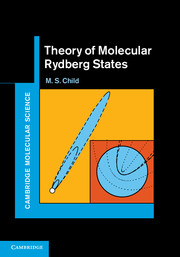Book contents
- Frontmatter
- Contents
- Preface
- 1 Molecular Rydberg states
- 2 The quantum defect picture
- 3 Ab-initio quantum defects
- 4 Frame transformations and channel interactions
- 5 Competitive fragmentation
- 6 Photo-excitation
- 7 Photo-ionization
- 8 Manipulating Rydberg states
- Appendix A MQDT normalization
- Appendix B Alternative MQDT representations
- Appendix C Rotational frame transformations
- Appendix D Optical transition and photo-ionization amplitudes
- Appendix E Generalized MQDT representation
- Appendix F Notation
- Index
- References
6 - Photo-excitation
Published online by Cambridge University Press: 07 October 2011
- Frontmatter
- Contents
- Preface
- 1 Molecular Rydberg states
- 2 The quantum defect picture
- 3 Ab-initio quantum defects
- 4 Frame transformations and channel interactions
- 5 Competitive fragmentation
- 6 Photo-excitation
- 7 Photo-ionization
- 8 Manipulating Rydberg states
- Appendix A MQDT normalization
- Appendix B Alternative MQDT representations
- Appendix C Rotational frame transformations
- Appendix D Optical transition and photo-ionization amplitudes
- Appendix E Generalized MQDT representation
- Appendix F Notation
- Index
- References
Summary
Introduction
The properties of molecular Rydberg states are most commonly observed experimentally by photo-excitation and photo-ionization, and it is impossible to ignore the explosion of interest in multiphoton phenomena over the past twenty years. It is, however, beyond the scope of this book to attempt anything like a comprehensive treatment. Attention is therefore restricted to the weak field theory, in which light acts as a perturbation. Readers are referred to Lambropoulos and Smith for a fuller discussion [1]. Explicit results are restricted to one and two photons, leaving the reader to consult the literature for extension to n photons. This chapter concerns excitation between discrete bound states, either by single-photon absorption or n + 1 resonant multiphoton ionization (REMPI) [2, 3, 4].
The first of the following sections outlines the perturbation theory of one- and two-photon absorption, as initiated by Göppert-Mayer, and the extension to three-photon processes is indicated [5]. Aspects of the theory, such as the point group symmetries of the resulting dipole (n = 1), polarizability (n = 2) and hyperpolarizability (n = 3) operators are readily deduced in a Cartesian formulation [6]. However, the relevant angular momentum manipulations including the selection rules for the various n-photon linear and circular polarization possibilities are often most easily performed in a complex spherical tensor representation, which is outlined in Section 6.3 [6, 7]. There are also advantages, for resonant processes, in employing an alternative density matrix, which focuses on spatial characteristics of the excited angular momentum, rather than the overall excitation probability.
- Type
- Chapter
- Information
- Theory of Molecular Rydberg States , pp. 157 - 190Publisher: Cambridge University PressPrint publication year: 2011



